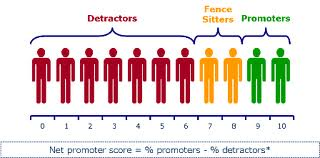When your organization is asked to respond to an RFP, the prospective client likely already believes you have the capabilities they need. But don’t blow this opportunity by assuming the sale and submitting a shoddy response.

Robert Coolidge
President & CEO
At Encompass, we are fortunate to have had the opportunity to participate in countless RFPs over the years. I’ve seen virtually every format imaginable – from one to two basic pages in a Word document to sophisticated, automated tools. In the end, we win some and lose some, but always view RFPs as a valuable learning opportunity.
A thoughtful, carefully crafted RFP response fully showcasing your organization’s capabilities and strengths can set you apart from the competition. If you’ve
made the short list to receive an RFP, here are five key strategies to creating a highly-effective response:
1. Thoroughly Review the Client’s RFP Document – It may sound elementary, but before typing the first word, carefully read all of the client’s instructions and questions. Most clients provide specific direction on how the response should be organized and answered. Adhere to the requested format, and ensure all
questions are covered completely in your response – this is not the time to demonstrate your creativity by providing the client a response they didn’t ask for.
Many companies make the mistake of assuming they know what the client wants without taking the time to thoroughly read the proposal request. Submitting a
response that doesn’t follow the client’s outline or fully address their requirements will often be excluded from the next round of the RFP process simply
for not following instructions. If you have additional information you feel is essential to your response, include it as an appendix or attachment separate
from the main document.
2. Brag on Your Company
– This is the perfect chance to sell your organization so don’t hold back. Consult with your internal subject matter experts to ensure you accurately capture the depth of your abilities for each of the client’s requirements – and do so with captivating detail. At the same time, be wary of over promising and under delivering. If you are awarded the business and can’t back up your claims of execution, you risk irreparable damage to your credibility – among many other issues (see #1 about thoroughly reviewing the client’s requirements).
3. Demonstrate Professionalism – Again, it may sound obvious, but before submitting your response, ensure your document is meticulously reviewed by someone other than the principle author for such basics as typos and grammatical errors. Do not skip this step; even the best writers can miss mistakes after countless hours of preparation and reviewing. Nothing conveys inadequacies and unprofessionalism like a document riddled with typos. In addition, be sure to add a cover letter summarizing your competitive strengths as they specifically relate to the
client requirements.
4. Beat the Deadline – When possible, submit your response ahead of the stated deadline. This can help you outshine the competition by demonstrating your enthusiasm for the opportunity, depth of knowledge on the subject matter and ability to complete projects before they are due. At the same time, be mindful not to rush through the response. It’s always better to meet the deadline with a complete and thoughtful response than to beat it with a careless one.
5. Follow Up – Whether you win or lose, be gracious and thank the client for including your organization in the RFP process. If you are not awarded the business, ask why so you can obtain
critical feedback on your response. This input can help provide insight into how your organization’s capabilities may be lacking compared to the competition, as well as help you develop better quality RFPs in the future.
The RFP process can be cumbersome and time consuming, but can yield lucrative benefits. Even if your organization is not selected this time, you could leave a favorable impression for future bids and be first on the list for the next one. Also, keep in mind you could have a more immediate opportunity if the client’s project begins to falter.
Plus, people reviewing your RFP for one company may land at another where there is better opportunity. Developing a high-quality, well thought out response is critical to your chances of winning – if not now, then maybe down the road.











